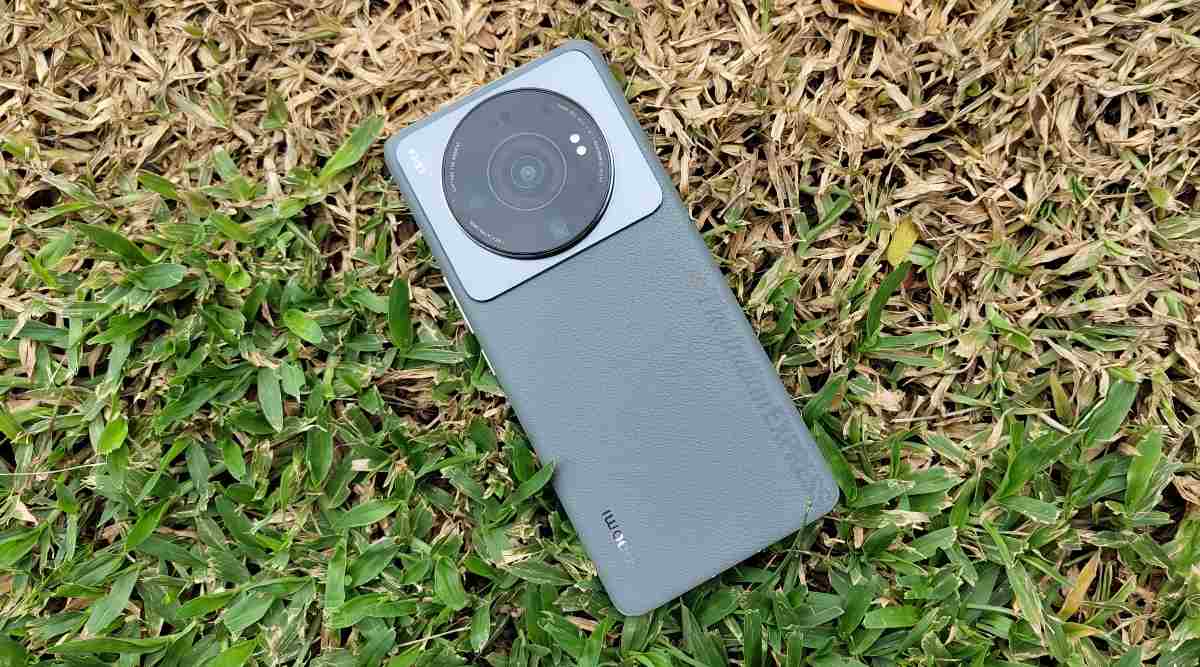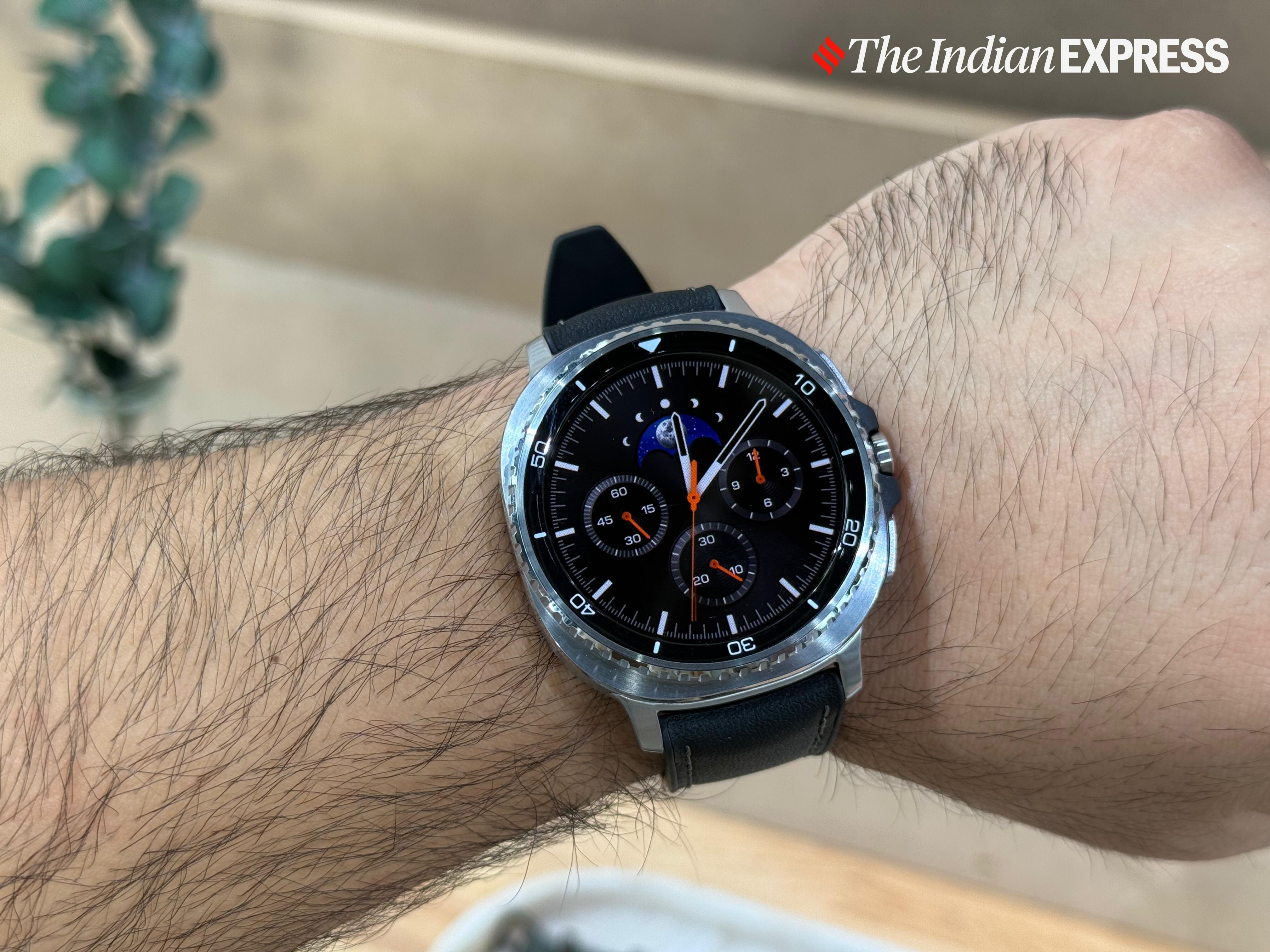Xiaomi 12S Ultra is being pitched as a flagship device inside out. But its signature aspect is the company’s first collaboration with German camera-maker Leica, which drips into the device’s standout feature – a one-inch camera sensor on the back. Yes, the large camera sensor is great for taking better pictures, especially in low light. But that’s on paper. How great is this new camera in real life? I took the Xiaomi 12S Ultra camera for a spin in the city of Pondicherry, and here’s what my first impressions of the phone are.
No compromise on performance
The Xiaomi 12S Ultra is a specced out phone, something evident from the moment you begin using it. From Qualcomm’s latest Snapdragon 8+ Gen 1 to a QHD LTPO 2.0 AMOLED display, you’ve got all the specs you’d expect from a flagship here and it’s nice to see Xiaomi hasn’t compromised on other aspects of the phone, in pursuit of a supreme camera experience.
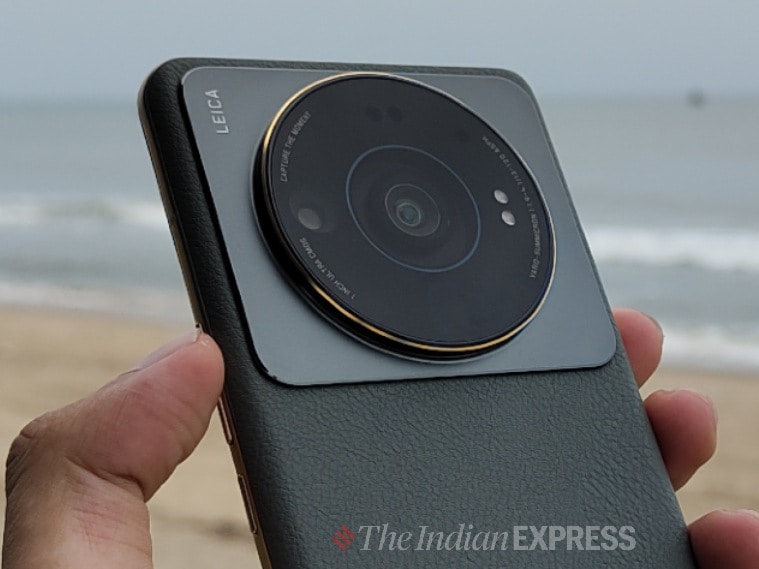 The Xiaomi 12S Ultra is mainly a camera smartphone, but it doesn’t skip the rest of the flagship checklist. (Image Source: Chetan Nayak/ The Indian Express)
The Xiaomi 12S Ultra is mainly a camera smartphone, but it doesn’t skip the rest of the flagship checklist. (Image Source: Chetan Nayak/ The Indian Express)
Here’s a quick look at the key specifications of the phone:
Xiaomi 12S Ultra Specs: 6.73-inch LTPO 2.0 QHD display with 120Hz refresh rate, Dolby Vision, 1500 nits peak brightness | Snapdragon 8+ Gen 1, up to 12GB RAM, 512GB UFS 3.1 storage | 50.3MP + 48MP + 48MP rear camera + 32MP selfie camera | 4860mAh battery + 67W charging | IP68 dust, water resistance |
The phone also comes with stereo speakers, an optical under the display-fingerprint sensor and Xiaomi’s signature IR blaster. You don’t get the fastest wired charging out there at 67W, but the phone also supports 50W wireless charging, along with USB Power Delivery 3.0 and Qualcomm Quick Charge 4 support, so that’s something.
A premium look and feel
I was sceptical of the Xiaomi 12S Ultra’s design when the first leaks started surfacing on the web, but holding the phone in hand, the feeling quickly vanished. The device is large, and yes, it’s also on the heavier side, but the premium design here somehow works. Instead of feeling like I was carrying an out-of-proportion smartphone, this felt like a phone with a specific purpose and a design to match.

 The two colour variants of the Xiaomi 12S Ultra (Image Source: Chetan Nayak/ The Indian Express)
The two colour variants of the Xiaomi 12S Ultra (Image Source: Chetan Nayak/ The Indian Express)
That said, the phone overall doesn’t feel much bigger than other phones in its class. The Xiaomi 12S Ultra comes in two colourways and while I can see most people gravitating towards the classier black variant, I took a liking to the olive-green-like shade of the other variant. Design is subjective, after all.
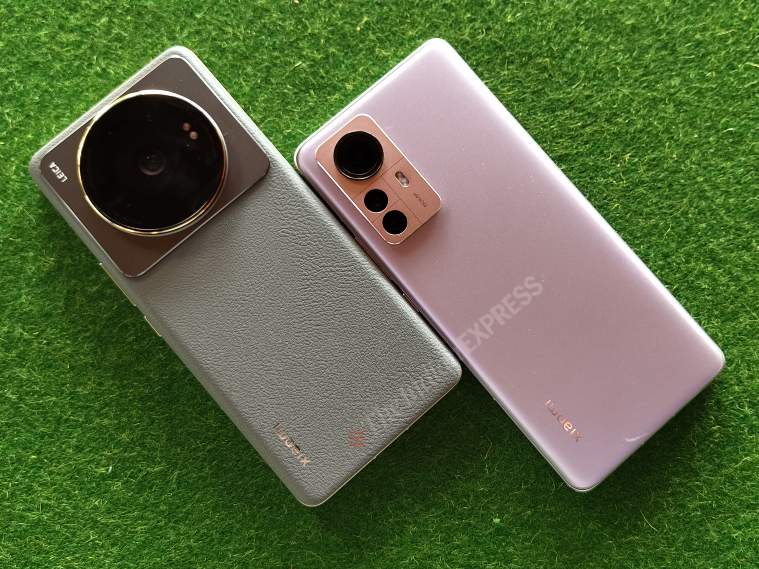
 The 12S Ultra is placed next to the Xiaomi 12 Pro. (Image Source: Chetan Nayak/ The Indian Express)
The 12S Ultra is placed next to the Xiaomi 12 Pro. (Image Source: Chetan Nayak/ The Indian Express)
All about that Leica camera
The Xiaomi 12S camera is great, and it is packed with features. This starts with two shooting modes, one that sticks to keeping colours natural, and the other that makes colours and shows pop a little more. During the daytime, the photos I took looked colourful and vibrant almost always and images between the main, telephoto and ultrawide cameras had a lot of consistency.
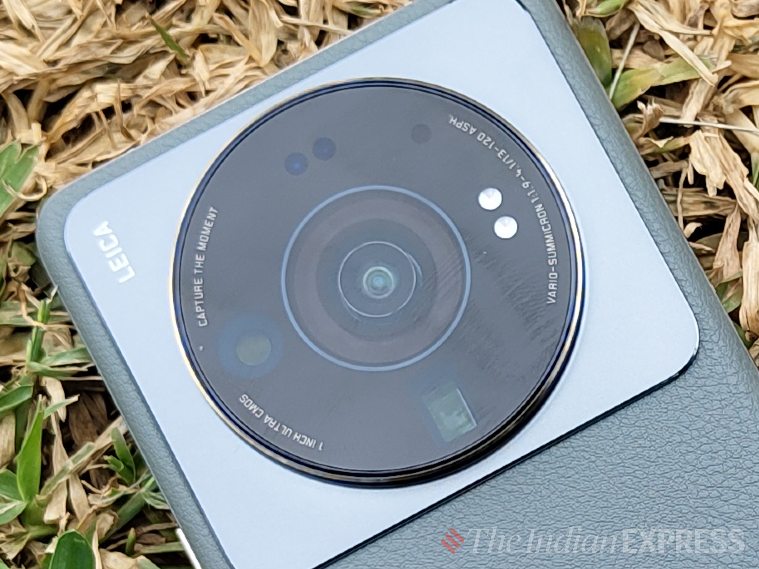
 The camera island on the Xiaomi 12S Ultra is probably the largest one you’ve seen lately, and yes, it protrudes quite a bit. (Image Source: Chetan Nayak/ The Indian Express)
The camera island on the Xiaomi 12S Ultra is probably the largest one you’ve seen lately, and yes, it protrudes quite a bit. (Image Source: Chetan Nayak/ The Indian Express)
It’s kind of hard to take a bad picture with the 12S Ultra, especially if you know how to handle the settings you get, including a full Pro-mode (manual mode) and RAW support, though the automatic regular camera mode should suffice for most.
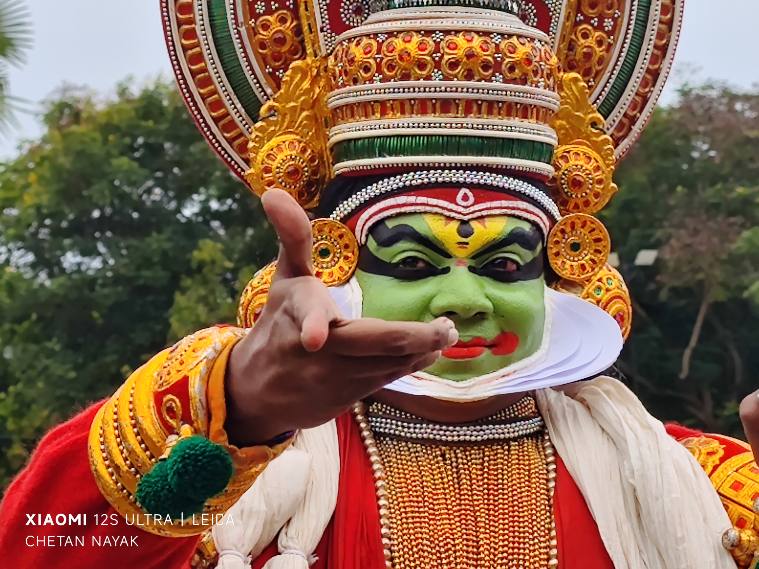
 A Kathakali performer’s facial expressions. (Image Source: Chetan Nayak/ The Indian Express)
A Kathakali performer’s facial expressions. (Image Source: Chetan Nayak/ The Indian Express)
Some colourful camera samples from the #Xiaomi 12S Ultra 📸 | More shots coming soon!#Xiaomi12SUltra #XiaomiBehindTheLens pic.twitter.com/AuvrMP7Cc7
— Chetan Nayak (@chet_code) August 20, 2022
However, macro shots didn’t resonate with the rest of the experience from the UI’s macro-mode, and I ended up shooting closer subjects using the main lens with some zoom instead.

 An ant hopping leaves on a plant. (Image Source: Chetan Nayak/ The Indian Express)
An ant hopping leaves on a plant. (Image Source: Chetan Nayak/ The Indian Express)
Leica’s new monochrome filters also produce really pleasing-looking monochrome shots in pretty much any setting, including after sundown.
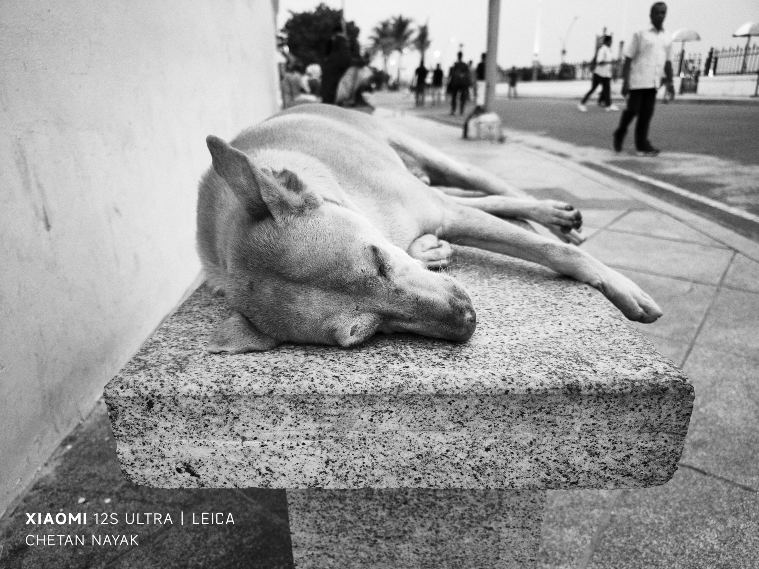
 A dog napping the afternoon away. (Image Source: Chetan Nayak/ The Indian Express)
A dog napping the afternoon away. (Image Source: Chetan Nayak/ The Indian Express)
Some monochrome goodness, also from the #Xiaomi12SUltra 📸 pic.twitter.com/NQCGd20JGN
— Chetan Nayak (@chet_code) August 20, 2022

 A locked door on the streets of Pondicherry. (Image Source: Chetan Nayak/ The Indian Express)
A locked door on the streets of Pondicherry. (Image Source: Chetan Nayak/ The Indian Express)
Low light is where the Xiaomi 12S Ultra stands out significantly more than other phones I’ve recently used. A lot more light results in less grainy shots, along with a lot of detail. The phone encourages you to play around with the settings if you’re looking to take some more creative photos even at night, instead of restricting you to the optimal settings for the least noise and softness.
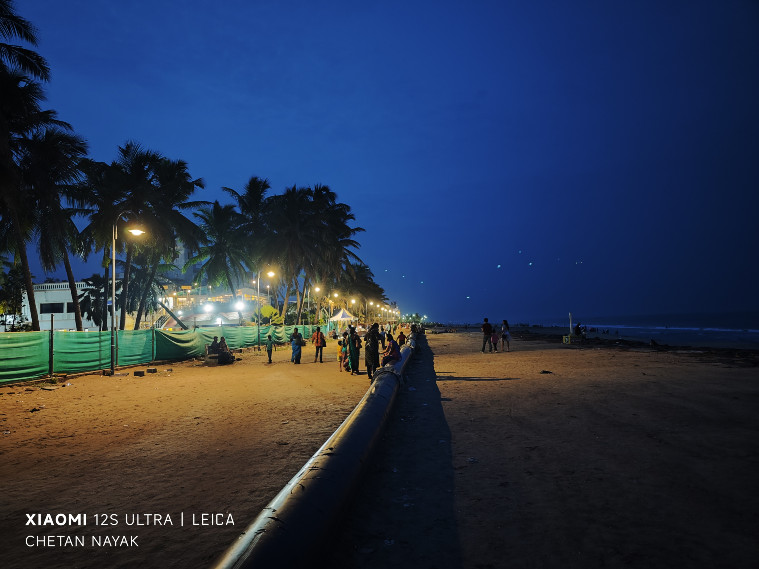
 Pondicherry beach after sunset. (Image Source: Chetan Nayak/ The Indian Express)
Pondicherry beach after sunset. (Image Source: Chetan Nayak/ The Indian Express)
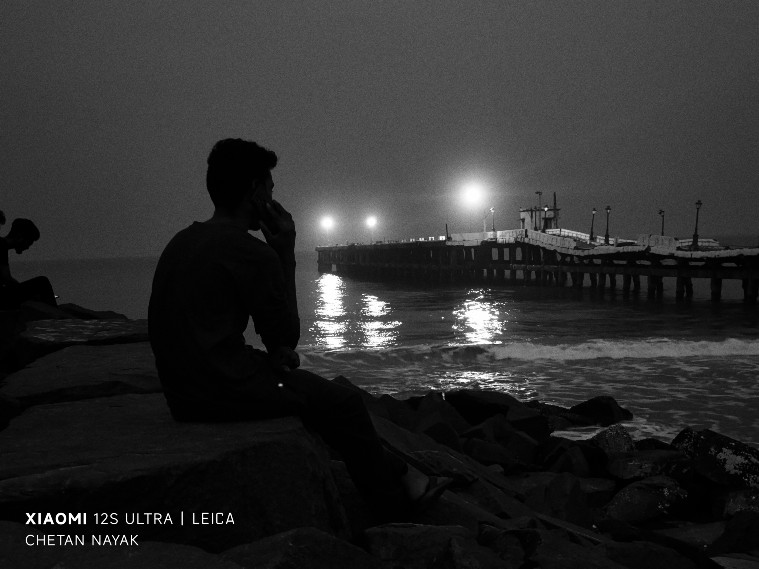
 A man enjoying the pier’s lights at night. (Image Source: Chetan Nayak/ The Indian Express)
A man enjoying the pier’s lights at night. (Image Source: Chetan Nayak/ The Indian Express)
The result is some really nice low-light photos, even in extreme darkness. While you still can’t compare the low-light performance of the 12S Ultra with professional cameras, throw in some effort behind a night shot or a portrait and you may just be surprised by what you end up capturing using this phoen.
But, will you get the 12S Ultra?
The Xiaomi 12S Ultra is not yet confirmed to launch in markets outside of China, including India. However, some recent leaks suggest Xiaomi may be considering the same. The Xiaomi 12S Ultra costs 5,999 yuan (about Rs 70,188) which seems like a fair price for the specifications and the camera you get here. However, if Xiaomi decides against bringing the phone to India, the only way to get the phone would be to ship it from China, which would cost you more and also get you a phone with the Chinese version of the MIUI software and no Google services (including the Play Store).
Disclaimer: Xiaomi sponsored the correspondent’s tickets and hotel stay in Pondicherry
!function(f,b,e,v,n,t,s)
{if(f.fbq)return;n=f.fbq=function(){n.callMethod?
n.callMethod.apply(n,arguments):n.queue.push(arguments)};
if(!f._fbq)f._fbq=n;n.push=n;n.loaded=!0;n.version=’2.0′;
n.queue=[];t=b.createElement(e);t.async=!0;
t.src=v;s=b.getElementsByTagName(e)[0];
s.parentNode.insertBefore(t,s)}(window, document,’script’,
‘https://connect.facebook.net/en_US/fbevents.js’);
fbq(‘init’, ‘444470064056909’);
fbq(‘track’, ‘PageView’);


